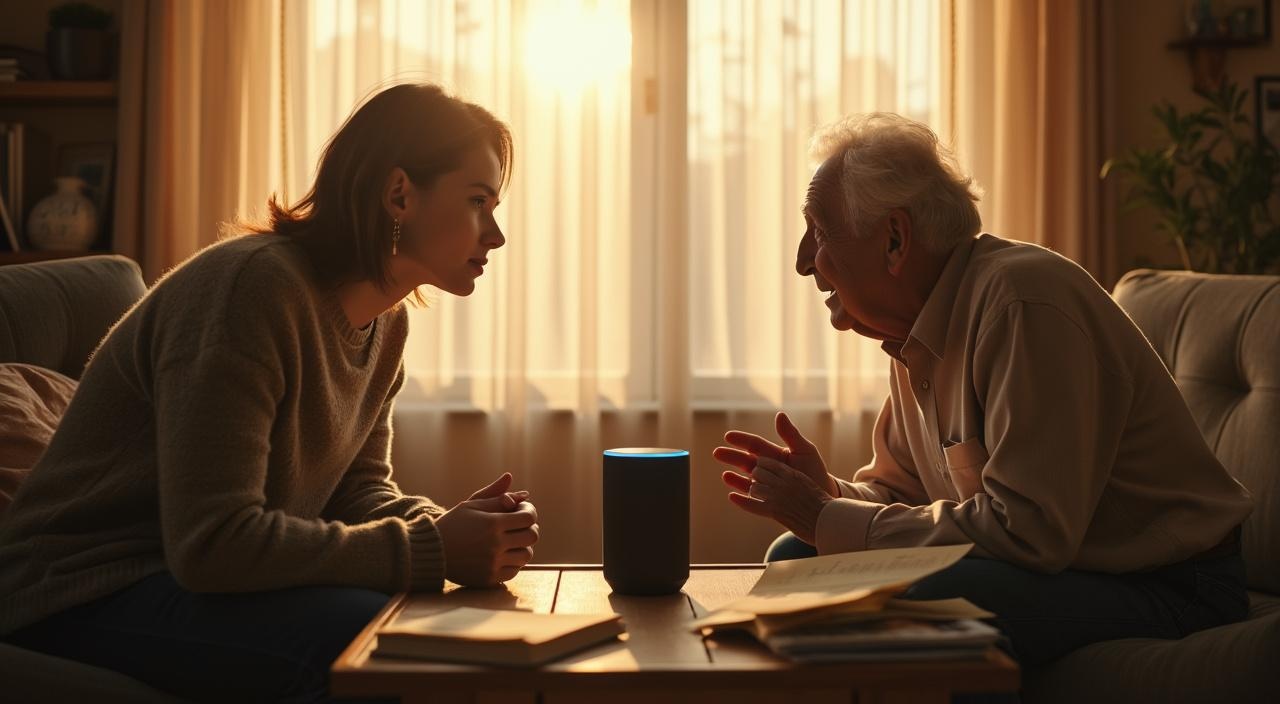In an era of digital disconnection, I’m witnessing a profound paradox: technology that promises connection often leaves us feeling more isolated. As AI emerges as a potential emotional bridge, we stand at a critical juncture where machines might help us rediscover the art of meaningful human communication.
Key Takeaways:
- Digital communication currently strips away critical emotional nuances like voice inflection, body language, and genuine engagement
- AI has potential to create safer spaces for practicing vulnerability and emotional intelligence
- 42% of people believe technology increases communication frequency, yet 29% feel less personally connected
- Social robots and AI can help improve emotional recognition and reduce conversation anxiety
- The future of communication lies in using AI as a bridge, not a replacement, for human interaction
When Technology Disconnects Us
I watched my teenage nephew scroll through hundreds of messages while sitting alone at a family dinner. He was “connected” to dozens of friends but couldn’t look up from his screen long enough to connect with the people right beside him.
This scene captures our modern paradox perfectly. The Pew Research Center found that 42% of people believe technology increases their communication frequency. Yet 29% report feeling less connected in their personal relationships than before.
The Numbers Tell a Troubling Story
We send an average of 13 texts daily but spend under 8 minutes sharing genuine emotions face-to-face. That’s like replacing a home-cooked meal with energy bars. You get the nutrients, but you miss the nourishment.
Why Digital Falls Short
Digital communication strips away the subtle cues that make conversations meaningful:
- Voice inflection that reveals true feelings
- Body language that shows engagement
- Eye contact that builds trust
- Shared silence that deepens connection
Social media fatigue has become a real phenomenon. We’re drowning in surface-level interactions while starving for depth. I’ve experienced this myself after moving between three countries and cultures. Digital tools helped me stay in touch, but they couldn’t replicate the warmth of sitting across from someone who truly listened.
The irony? We have more ways to communicate than ever, yet loneliness rates continue climbing. AI agents might not replace us, but our current digital habits are already changing what it means to truly connect with another human being.
Something needs to change. The question is whether AI can help us find our way back to authentic conversation.
Language Beyond Words
I’ve spent years studying how humans connect, and the science keeps surprising me. The Harvard Review of Psychiatry found something remarkable in 2022: emotional language lights up neural networks far beyond basic speech centers. Your brain doesn’t just process words—it experiences them.
The Neural Dance of Connection
When someone shares their struggles or excitement, your mirror neurons fire in response. This creates what researchers call “emotional contagion“—you literally feel echoes of their experience. AI struggles with this biological reality because it lacks the neural architecture for genuine emotional resonance.
Transactional vs. Transformative Talk
Most conversations fall into two camps. Transactional exchanges handle information: “How’s the weather?” Transformative communication builds bonds through vulnerability and shared meaning. Here’s what separates them:
- Transactional focuses on data transfer
- Transformative creates emotional connection
- One informs, the other transforms relationships
The magic happens in those pause-filled moments between words. Facial expressions, vocal tremors, and timing carry 93% of emotional meaning. AI can process text brilliantly, but it misses the human symphony playing beneath our words.

AI as an Emotional Bridge
I’ve watched countless relationships strain under digital miscommunication. Text messages lose nuance. Video calls feel forced. We’re more connected yet more isolated than ever.
Here’s where things get fascinating: AI might actually help us reconnect.
The Educational Robot R1 study revealed something remarkable. Preschoolers who interacted with emotionally intelligent robots showed significant gains in emotional intelligence. Their emotion recognition improved. Social skills flourished.
Strange but true: machines are teaching humans to be more human.
Social robots demonstrate another breakthrough. They reduce anxiety in conversations while increasing self-disclosure. People open up to AI companions in ways they struggle with humans. No judgment. No social pressure. Just authentic expression.
AI Agents Won’t Replace You—But They Might Change What It Means to Be You explores this further.
Affective computing isn’t replacing human connection. It’s creating safer spaces to practice vulnerability before we bring those skills to our real relationships.

The Trust Equation: How We Perceive AI Emotions
Our brains don’t care if emotions are genuine. They respond to perceived intention with startling speed.
Recent neurological research reveals something fascinating about how we process AI emotions. Studies show a 30% increase in robot trustworthiness when we perceive positive intention behind their responses. That’s not a small bump—it’s a fundamental shift in how we relate to artificial beings.
Here’s what caught my attention: our brains assign mental states to AI within milliseconds. We’re not consciously choosing to trust these systems. We’re hardwired to detect intention, even when none exists.
The numbers tell a compelling story. Research indicates a 23% increase in perceived friendliness when AI displays emotional cues, regardless of programming complexity. Your brain doesn’t distinguish between calculated responses and spontaneous reactions.
I’ve watched this play out in my own consulting work. Clients who initially dismissed AI suddenly soften when chatbots display apparent empathy. The shift happens before they realize it. Their resistance melts because their neural pathways interpret emotional signals as authentic connection.
Strange but true: we’re projecting human qualities onto machines faster than we’re learning about their actual capabilities. This rapid mental state attribution creates an interesting paradox. We simultaneously know AI lacks consciousness while emotionally responding as if it possesses feelings.
This isn’t about whether AI agents will replace us—it’s about how our perception shapes interaction quality. When we trust AI emotional displays, conversations flow differently. We share more. We engage deeper.
The question becomes: does the source of empathy matter if the connection feels real?

Balancing Technology and Human Warmth
AI’s communication skills hit a wall when emotions run deep. I’ve watched brilliant algorithms stumble over the simplest human moments—a tearful confession, a nervous laugh, the pause before someone shares their biggest fear.
Recent survey data reveals our conflicted relationship with emotional AI. While 41% of people welcome AI-powered emotional conversations, a striking 81% still believe human presence remains irreplaceable for genuine comfort. This isn’t just nostalgia talking—it’s wisdom.
Practical Applications That Actually Work
Smart implementation focuses on AI as a bridge, not a replacement. Relationship coaching apps now use AI to prepare people for difficult conversations with real humans. Social robots in eldercare facilities don’t replace nurses—they help residents practice expressing their needs before speaking with staff.
The path forward demands mindful technology use and clear emotional boundaries. We must insist on AI systems designed with human dignity at their core, not efficiency metrics that strip away our humanity.
Sources:
– Pew Research Center
– Harvard Review of Psychiatry
– Educational robot R1 study








